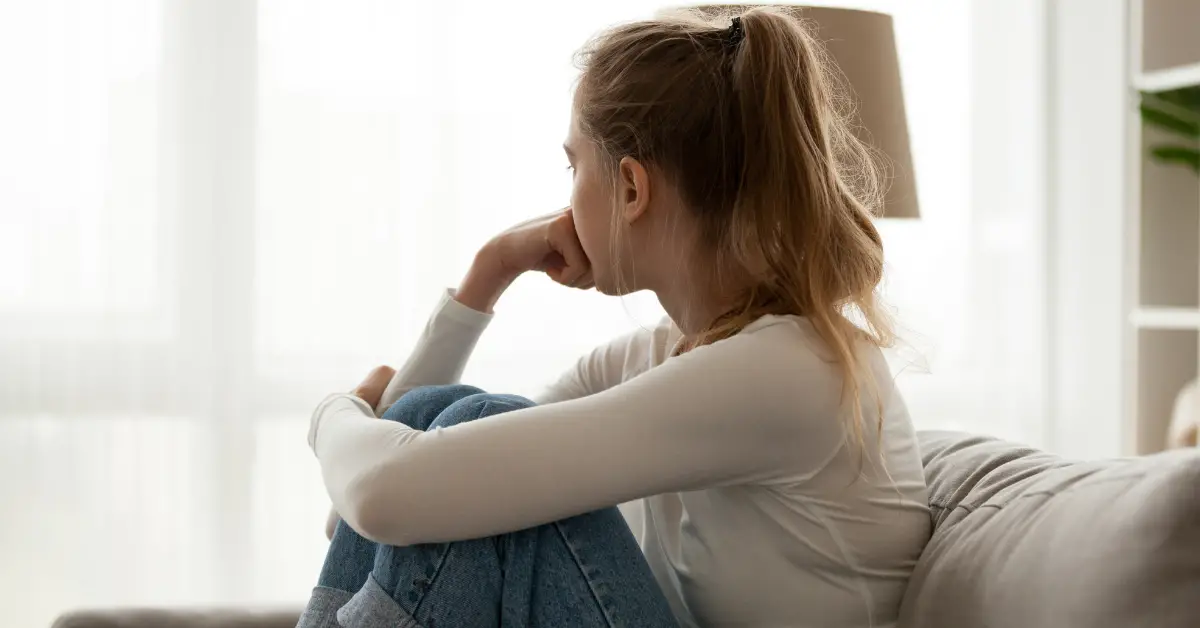Feeling anxious can make it hard to concentrate and leave you constantly worrying about what could go wrong. You might find yourself thinking “what if” a lot, feeling uncertain, and imagining disasters. Anxiety can change the way we think, making us more focused on potential problems instead of solutions. It can also make us feel like we need to know more and more to ease our anxiety.
Does this sound familiar to you?
The Impact of an Anxious Mind
An anxious mind is a tough place to be. It can also be challenging for those around you. We are often angry and short-tempered when we are anxious and may find it difficult to unwind and have fun.
Anxiety can have a negative impact on both your mental and physical well-being, leading to an increase in stress hormones such as adrenaline and cortisol. It can even lead to decision-making not aligned with your own desires and goals. For example, you may pass up an important opportunity such as a job interview or a social event due to feelings of nervousness and fear caused by anxiety.
By avoiding certain situations due to anxiety, our brain perceives this as a way to protect us from potential harm. As a result, it becomes more likely to experience anxiety in similar situations in the future, creating a cycle where our initial anxiety leads to more incidents in the long term.
Interestingly, anxiety is not intended to harm us. Instead, it is a natural survival mechanism stemming from our “fight or flight” response. Our brains are programmed to protect us by detecting potential dangers and preparing for worst-case scenarios. [1, 2]
And since we can’t really turn off our fight or flight response because that’s something that we need, what we need to focus on is how we can manage our anxious minds.
Apparently, we can do that with one word.
One-Word Technique for the Anxious Mind
Marina Harris, Ph.D., a sports psychologist at North Carolina State University, shares in a piece on Psychology Today her personal experience with anxiety and her discovery of the use of cue-controlled relaxation. [3]
Cue-controlled relaxation is a technique in which a relaxation exercise is combined with a specific cue, such as a word or phrase until one elicits the other in a conditioned response. This method employs classical conditioning — remember Pavlov and his dogs?
Ivan Pavlov was a Russian scientist who found a way to teach dogs to drool when they heard a bell ring. He observed that the dogs would start drooling as soon as he fed them. So, he started ringing a bell before giving them food. After a while, the dogs would start drooling as soon as they heard the bell, even if there was no food around. This came to be known as classical conditioning or Pavlovian conditioning. [4, 5]
A real-life example of this concept today would be if the aroma of coffee brewing in the morning makes you feel more awake. This could be a conditioned reaction that has been learned previously.
Cue-controlled relaxation is a kind of classical conditioning in which you associate a relaxed state with a word of your choice. Saying just one word promotes deep relaxation over time and with practice.
Experiments have demonstrated that the cue-controlled relaxation technique can help people who are anxious about things like taking tests or going to the dentist. [6]
Imagine — only one word stands between you and the peace you need. Planning to try it out yourself? Here’s how:
- Choose a Word You Like.
It should be a word that makes you feel calm and relaxed. Harris, for example, used the phrase “settle.” One of the experiment volunteers used the word “calm.” [3, 6]
Whatever word you choose, make sure you enjoy saying it to yourself because you’ll be saying it a lot.

- Find a Method of Relaxation That Works for You.
Choose a relaxation technique to go with your word. Paced breathing is an excellent first workout. Controlling and slowing your breathing is one of the simplest and most effective ways for lowering your heart rate, especially if you make your exhalations longer than your inhalations.
Breathe in for four counts and out for six counts. Say your cue word as you exhale, feeling your muscles relax as you do. Allow everything to relax, especially common points of tension such as the jaw, eyes, shoulders, or hands. This should be done for 3-5 minutes or until you feel completely relaxed.
Mindfulness, progressive muscle relaxation, and various breathing techniques are examples of relaxation techniques. Whatever breathing technique you use, repeat your cue phrase every time you exhale, either out loud or in your brain.
Do this at least once a day, if not more frequently. Continue practicing for at least a few days.
- Make It Shorter.
When you’ve been practicing your relaxation technique with your trigger word for a while and feel confident that you can use it to relax, you can start shortening the length of your sessions.
Harris suggests starting by making your sessions one minute shorter than before, then seeing if the technique still works for you in this shorter time frame. If not, keep practicing with your trigger word until it does. Once you’re sure the shorter session still works, you can shorten it again by another minute and keep testing until you find the right length that works for you.
Continue to whittle it down in this manner until you’re down to a single minute while still pronouncing your word. Then keep going until you’ve reduced it to a single word and a single breath. By the end of the procedure, simply repeating your phrase, either out loud or to yourself, should be enough to lower anxiety, combat tension, and alleviate pre-presentation jitters.
Anxious-Free Mind
Tools like meditation, writing, and exercise can help quiet anxious thoughts and keep stress at bay. Saying or thinking a single word is something you can do at any time, from anywhere, and it only takes a few seconds — and it’s worth a shot.
Once you’ve got the hang of these techniques, you’ll be able to instantly unwind with a single word. Consider it a magic word that will soothe your nerves, quiet your racing thoughts, and take back control of your life.

When Stress Affects Your Body
When stress affects the brain and its numerous nerve connections, the rest of the body is affected as well. Alternatively, if your body feels better, so will your mind.
As mentioned, anxiety impacts the body. When a person thinks about an anxious circumstance, mental thoughts stimulate the muscles into certain patterns of tension, as if bracing for a blow to the body. Physical relaxation and anxiety are mutually exclusive, according to Dr. Edmund Jacobson.
Dr. Jacobson is known as the father of progressive relaxation which focuses on relaxing the muscles to help relax the mind. The method involves tightening one muscle group while relaxing the rest of the body, then releasing the tension. [7, 8]
Applying this principle, you can also benefit from exercise and other forms of activity because they help release endorphins, which are chemicals in the brain that work as natural pain relievers. In fact, only five minutes of aerobic exercise can begin to stimulate anti-anxiety effects. [9]
Additionally, incorporating meditation into your routine can provide additional benefits. Melt away your stress by downloading this free 7-day guided meditation journey from Dr. Partha Nandi to pair with your newly learned one-word technique to manage anxiety.
Add Sleep Max supplements to your daily regimen — it does more than improve your sleep. It is specially formulated to promote relaxation and calmness, with ingredients that increase natural melatonin production. Get it from the Health Hero Pharmacy today.

Sources:
- What is Anxiety Information Sheet
- Anxiety and panic attacks – Mind
- How Just One Word Can Help Calm an Anxious Mind | Psychology Today
- Classical Conditioning – StatPearls – NCBI Bookshelf
- Pavlov’s Dogs Study and Pavlovian Conditioning Explained – Simply Psychology
- Cue-controlled relaxation in the treatment of test anxiety – ScienceDirect
- The man who invented relaxation – BBC News
- Edmund Jacobson
- Exercise for Stress and Anxiety




















